
Bibliothèque Nationale de France | Public Domain
By Dr Bilal Ahmed Tahir
Introduction
The Hajj, or ritual pilgrimage to Makkah and its environs, as God Himself stipulates in the Holy Qur’an, is obligatory upon every Muslim at least once in a lifetime, provided certain conditions are met.[1] The Holy Prophet of Islam (sa) has also declared it to be one of the five pillars of the faith.[2] Thus, for the pilgrim, fulfilling this sacred duty often represents the culmination of a lifelong ambition. For the past fifteen centuries, innumerable Muslim pilgrims from around the globe have made this journey successfully. However, throughout history, epidemics, conflicts and the perils of travel have occasionally impeded the ability of Muslims to perform the Hajj.[3]
This year’s Hajj is scheduled for the end of July. However, due to the recent outbreak of the 2019 novel coronavirus (COVID-19), at the time of writing, the Saudi Arabian authorities, who are the current administrators of the Hajj, are considering cancelling it for the first time since the establishment of the kingdom.[4] With the number of COVID-19 cases in the kingdom exceeding 100,000 and no signs of the epidemic abating, they have urged Muslims worldwide to defer preparations temporarily.
In light of the genuine prospect of a cancelled Hajj this year, or one that is severely restricted in numbers, The Review of Religions have deemed it timely to serialise, for the first time in the English language, the translations of three treatises relating to the Hajj of 1925, penned by Hazrat Khalifatul Masih II, Mirza Bashiruddin Mahmud Ahmad (ra), the Second Successor of the Promised Messiah, Hazrat Mirza Ghulam Ahmad (as) and then-worldwide head of the Ahmadiyya Muslim Community, amid a fierce conflict in what we now call Saudi Arabia. In these erudite and thought-provoking treatises, Hazrat Khalifatul Masih II (ra) emphatically advises Muslims of the Indian subcontinent – or indeed any Muslims travelling by sea – to defer performing the Hajj that year. This month, we publish the first of these three treatises. For our readers, the following serves as a primer for the necessary historical context to understand the first treatise.

Wikimedia Commons
The 1924-25 Hijaz-Najd / Saudi-Hashimite War
The First World War brought an end to four centuries of Ottoman Turkish rule over the Hijaz, the western portion of the Arabian Peninsula which includes the holy cities of Makkah and Madinah. Since 968 CE, on behalf of several Muslim empires, the Hijaz, and thus the Hajj, had been administered by the Sharifs of Makkah, members of the Hashimite dynasty who claimed prophetic ancestry through Hazrat Hasan bin Ali (ra), a grandson of the Holy Prophet Muhammad (sa).[5] However, in 1916, the Hijaz was ruled independently by Sharif Hussein bin Ali who had established the Hashimite Kingdom of Hijaz after seceding from, and leading a revolt against, the Ottoman Empire.[6] The Najd, the neighbouring region to the East which encompasses central Arabia, was ruled by Abdul Aziz bin Abdul Rahman Al Saud (commonly known as Ibn Saud), Sultan of the Najd and its dependencies.[7]

Sultan of the Najd and its dependencies.
Wikimedia Commons
Tensions and rivalries had existed between the Hashimites of Hijaz and the Saudis of Najd since the eighteenth century, after the latter had adopted Wahhabism, a reform movement founded by Islamic scholar Muhammad bin Abd al-Wahhab (1703–1792), which advocated purging Islam of several widespread Sunni practices such as the veneration of saints and the visitation of their tombs and shrines; they deemed these practices to impinge on tawhid [God’s oneness].[8] In the mid-eighteenth century, this culminated in the then-Sharif of Makkah, Mas‘ud bin Sa‘id (1733–1750), instructing the orthodox Sunni Muslim clergy to issue a religious edict declaring the Wahhabis to be beyond the pale of Islam, thus giving him the right to ban them from the Hajj.[9],[10]
History repeated itself in 1919 when Sharif Hussein also decided to ban the Saudi-Wahhabis from performing the Hajj.[11],[12] Indirect negotiations facilitated by the British had failed to resolve the dispute.[13] Immediately following the 1924 Hajj season, Ibn Saud convened a meeting in his capital of Riyadh during which the Najdi scholars had ruled that Hussein’s prohibition of the Najdis performing the Hajj had justified war in response.[14] Soon after, the Saudis finally launched an attack on the Hashimite Kingdom of Hijaz, invading the city of Taif on 5 September 1924. Following the fall of Taif, Sharif Hussein abdicated in favour of his son, Ali bin Hussein, on 3 October 1924. The Saudi forces subsequently entered the holy city of Makkah on Thursday, 16 October 1924,[15] which had been abandoned by the Hashimites as they fled for the port city of Jeddah.[16]
The Saudi Management of the 1925 Hajj Season
With Makkah seized by the Saudis but the war still ongoing, the 1925 Hajj season presented significant challenges to Ibn Saud; it was the first Hajj he was to manage and he strove earnestly to ensure its success to bolster his prestige and boost the Saudi economy. However, many pilgrims were from foreign lands and their route to Makkah was by sea via the port of Jeddah, which remained under Hashimite control. Sharif Ali was determined to deny Ibn Saud a successful hajj. As such, he forbade pilgrims from landing at Jeddah.[17] Ibn Saud was mainly concerned with accommodating Indian pilgrims, who frequently constituted the most significant proportion of overseas pilgrims. His solution was to select the port city of Rabigh as an alternative to Jeddah as he had control of the land around it. Ibn Saud himself issued reassurances to potential pilgrims, published through Umm al-Qura, the first Saudi newspaper and its official mouthpiece, guaranteeing their safety.[18] However, Sharif Ali had declared a blockade on all pilgrim ships landing at Rabigh and other ports, warning pilgrims to defer the pilgrimage that year or face the consequences.[19] In defiance, on 29 May, Umm al-Qura announced that Indian pilgrim ships were to dock there, assuring them that the Saudis had made special provisions for their safety.[20]

In a bid to undermine Hashimite authority and to bolster the Saudis, the Indian Muslim leaders were adamant on encouraging the masses in the subcontinent to perform the Hajj during the conflict, regardless of the risks it posed to their welfare and safety; Sharif Hussein and the Hashimites had been the object of scorn of Indian Muslims and were declared enemies of the faith for instigating the Arab revolt against the Ottomans during the First World War.[21],[22] Ibn Saud had openly acknowledged the encouragement he received from the Indian Muslims in his war against the Hashimites.[23] Their support for Ibn Saud had been based on the false belief that the Saudis had supported the Ottomans during the war, unknowing that the Saudis themselves had signed a treaty with the British on 26 December 1915, known as the Treaty of Darin, to assist the British in their war effort against the Ottomans in exchange for a gold subsidy and recognition of Saudi lands as a British protectorate.[24]
Hazrat Khalifatul Masih II’s (ra) position on the 1925 Hajj
It was in this context that Hazrat Khalifatul Masih II (ra) advised potential Indian Muslim pilgrims to cancel their plans to perform the Hajj that year, rebuking the Indian Muslim leaders who were advocating otherwise for political purposes. His position was in full accordance with the dictates of Islamic jurisprudence that stipulates that the Hajj should only be performed if safety can be guaranteed; Muslim legal scholars view the existence of peace and the guarantee for the integrity of body and property on the entire journey as a precondition for the Hajj becoming compulsory.[25]
Elsewhere in the Muslim world, religious leaders had also issued edicts to prohibit attendance at the 1925 Hajj. For example, the Egyptian clergy had issued an edict proclaiming that the obligation of the Hajj was absolved that year due to the roads to Makkah being in the contentious occupation of hostile armies.[26] This is of particular significance as, for several centuries, the Egyptians had traditionally played a central role in the Hajj; they commissioned and manufactured the Kiswah, the cloth covering of the Ka‘bah [27],[28] which was transported in the annual ceremonial palanquin, the Mahmal. The Mahmal was accompanied by hundreds of fully armed soldiers and was the main symbol of Egyptian patronage for the Holy Land.[29],[30]

Indeed, throughout history, there are several precedents of the Hajj being disrupted for political, economic and health reasons, the most notorious of which is due to the Qarmatian sack of Makkah in the tenth century. The Qarmatians of Bahrain were an unorthodox sect based on Ismaili Shiism, who established their own state under Abu Tahir al-Janabi (906–944). They considered the Hajj to be a superstitious pagan ritual and, in 930 CE, viciously sacked Makkah during the Hajj season, massacring 30,000 pilgrims and dumping their corpses into the sacred Zamzam well.[31] They also seized the Black Stone of the Ka‘bah.[32] For several years after, the Hajj was severely disrupted due to public fears of further Qarmatian assaults.[33] Several Muslim scholars who were contemporary to these events, such as the Hanafi jurist Abu al-Qasim al-Saffar, issued religious edicts absolving the obligation of the Hajj during those years.[34]
It must also be borne in mind that in issuing this edict of temporarily deferring the 1925 Hajj, it is by no means indicative of Hazrat Khalifatul Masih II’s (ra) laxity towards fulfilling this sacred duty. He had, in fact, performed the Hajj in 1912 before assuming the role of caliph. In a letter he penned during his pilgrimage addressed to the then-leader of the Ahmadiyya Muslim Community, Hazrat Khalifatul Masih I, Maulvi Hakeem Nooruddin (ra), he stated that ‘the value of Hajj and its grandeur cannot be comprehended without performing it. Indeed, the prayers and attention drawn towards God, which I have witnessed during this journey have never been witnessed before.’[35] Furthermore, during his caliphate, he emphatically urged Muslims to hasten in performing the Hajj and deemed it to be the ‘greatest good deed that the rich could do’.[36] Indeed, once the Hijaz-Najd war had concluded, Ahmadis began to make a concerted effort to fulfil the duty with 50 to 60 performing the Hajj in 1927.[37] The number of Ahmadi pilgrims had increased during the following year whereby they travelled as part of a single group.[38]
The Aftermath of the 1925 Hajj
The Hajj of 1925 was by no means comfortable. The Hashimites were keen to enforce the blockade by dispatching their blockading vessels, such as the steamer Tawil, to stop ships from harbouring at Rabigh.[39] Umm al-Qura reported that one of Sharif Ali’s vessels had attempted to bombard a ship full of Indian pilgrims. In response, several pilgrim ships had delayed landing for eleven days until the British intervened.[40]
Eldon Rutter, a former British soldier who served in the First World War and subsequently converted to Islam, performed the Hajj that year in the guise of a Syrian pilgrim, and published his experience in a travelogue, providing future generations with an excellent description of the season.[41] Due to the active blockade, Rutter took an alternative, more treacherous, route by sailing from Massawa in Eritrea on a dhow, arriving at the south of Qunfudha. He provides first-hand testimony about the perils of travel, stating:
‘My companions had heard that the Sharif Ali had a gunboat watching the ports south of Jidda [sic]. All sorts of news was constantly in circulation, as every dhow coming from the Arabian side brought Makkans who were fleeing from the straitness of war conditions and the uncomfortable puritanism of the Wahhabis. Apparently it was to be a case of “touch and go” getting into Arabia, with the possibility of being interned at Jidda as prisoners of war.’[42]
He also described an example of a Hashimite aerial bombardment:
‘Our party had been badly frightened that morning by an aeroplane which had passed over Mekka, coming from the hostile camp of the Sharif Ali, at Jidda. Three bombs had been dropped on the hills bordering the northern side of the Muabda, with the object, doubtless, of hitting Ibn Sa’ud’s palace in the Abtah. I had heard from one of the government officials that the only damage which they did was to destroy the straw hut of a Takruni, and slightly to wound in the leg an old black woman. I now told our company of this, and at once all their faces became anxious.” [43]
Although the Saudis were quick to paint a positive picture of their first attempt at managing the Hajj since regime change in Makkah, in light of the turmoil surrounding it, the 1925 Hajj proved meagre, with only around 7,000 overseas pilgrims as per the official Saudi report.[44] This is in contrast to the previous year, where the annual average of the overseas contingent was recorded as 92,707 with 18,432 from India.[45] In ensuing years, after annexing the whole of the Hijaz and exiling the Hashimites from their homeland, the Hajj would finally witness unprecedented levels of safety and security under the Saudis. However, as we will see in a later episode, they would eventually impose the same discriminatory policies on a new reformist movement in Islam that their ancestors had suffered from at the hands of the Hashimite Sharifs.
About the Author: Dr Bilal Ahmed Tahir is currently an Assistant Professor and Senior Research Fellow at the University of Sheffield, United Kingdom, specialising in the field of medical physics. He serves as the Head of the Arabic Desk for the Northern UK regions and is a member of the International Arabic Desk of the worldwide Ahmadiyya Muslim Community. He has translated and reviewed several publications both from and into the Arabic language. He also serves as the International Head of the newly formed The Review of Religions Research Desk.
ENDNOTES
[1] Holy Qur’an, Surah Aal-Imran, Verse 98 {And pilgrimage to the House is a duty which men — those who can find a way thither — owe to Allah}
[2] Bukhari, Sahih, “Iman” 1, bab al-iman wa-qawl al-Nabi salla llahu ‘alayhi wa-sallam buniya l-islamu ‘ala khams
[3] F.E Peters, The Hajj: The Muslim Pilgrimage to Mecca and the Holy Places (Princeton: Princeton University Press, 1994).
[4] Al Omran, A., 2020. Saudi Arabia Considers Cancelling Hajj For First Time In Modern History. The Financial Times [online]. Available at: <https://www.ft.com/content/5b2364be-42cb-4973-a10d-52ba62b1b0df> [Accessed 12 June 2020].
[5] Gerhard Böwering, Patricia Crone, Mahan Mirza, The Princeton Encyclopaedia of Islamic Political Thought (Princeton: Princeton University Press, 2011), p. 190.
[6] Joshua Teitelbaum, The Rise and Fall of the Hashimite Kingdom of Arabia (London: C. Hurst & Co. Publishers, 2001), p. 9.
[7] Madawi Al-Rasheed, A History of Saudi Arabia (Cambridge: Cambridge University Press, 2010), p. 41.
[8] David Commins, “The Wahhabi Mission And Saudi Arabia. London” (London: I B Tauris & Co Ltd., 2012), p. 7.
[9] M. Abdul Bari, “The Early Wahhabis and the Sharifs of Makkah”, Journal of the Pakistan Historical Society, Vol. 3 (1955), p. 93.
[10] Gerald De Gaury, Rulers of Mecca. (London: Harrap, 1951), p. 181.
[11] Joseph Kostiner, The Making of Saudi Arabia (PhD thesis, London School of Economics, 1982), pp. 159-63.
[12] Amin Sa‘id, Ta’rikh al-dawlah al-Sa‘udiyyah (Beirut: Dar al-Kitab al-’Arabi, 1964), p.1149.
[13] Letter dated 1 Dhu al-Qa’dah 1338 AH (16 July 1920) from Ibn Saud to the political agent in Bahrain, in Memorandum No. 215-C, 26 July 1920, from the latter to the civil commissioner in Baghdad, FO 371/5064/E 11854.
[14] Amin Sa‘id, Ta’rikh al-dawla al-Sa‘udiyya (Beirut: Dar al-Kitab al-’Arabi, 1964), pp.146-8.
[15] Saud al-Sarhan, “The Saudis as managers of the Hajj”. In: The Hajj: Pilgrimage in Islam, ed. by Eric Tagliacozzo, Shawkat M. Toorawa (Cambridge: Cambridge University Press, 2015), pp. 196-212.
[16] Joshua Teitelbaum. 2019. “Hashemites, Egyptians And Saudis: The Tripartite Struggle For The Pilgrimage In The Shadow Of Ottoman Defeat”. Middle Eastern Studies 56 (1): 36-47.
[17] Ibid.
[18] Umm al-Qura, 13 and 27 February 1925.
[19] Bullard to Chamberlain, 8 January 1925 (Jidda Report for 31 December 1924–8 January 1925), FO 371/10807/E 623.
[20] Umm al-Qura, 29 May 1925.
[21] Timothy J. Paris, Britain, the Hashemites, and Arab Rule, 1920-1925: The Sherifian Solution (London: Frank Cass, 2003), p. 316.
[22] M. Naeem Qureshi, Pan-Islam in British Indian Politics: A Study of the Khilafat Movement, 1918-1924 (Karachi: Oxford University Press, 2009), p. 55.
[23] Daily Telegraph, 22 September and 12 November 1924; Madras Mail, 26 November 1924.
[24] Philip P. Graves, ed., Memoirs of King Abdullah of Transjordan (London: Jonathan Cape, 1950), p. 186.
[25] Wizarat al-Awqaf wa-al-Shu’un al-Islamiyyah, al-Mawsu‘ah al-fiqhiyyah, 2nd edition (Kuwait: Dhat al-Salasil, 1990), Vol. 17, p. 34.
[26] E. Rutter, The Holy Cities of Arabia (London & New York: G. P. Putnam’s Sons Ltd., 1928), p. vi.
[27] Joshua Teitelbaum, “Saudi Arabia, Egypt, and the longue durée Struggle for Islam’s Holiest Places”, The Historical Journal, Vol. 60 (2017), pp. 1–23.
[28] Gillian Vogelsang-Eastwood, Snapshot: The Kiswa. In: Gillian Vogelsang-Eastwood, ed., Encyclopedia of Embroidery from the Arab World (London: Bloomsbury Academic, 2016), pp. 151-158.
[29] Yusuf Ahmad, al-Mahmal wa-al-Hajj (Cairo: Matba’at Hijazi, 1937), p. 261.
[30] Franz Buhl, Jacques Jomier, “Mahmal“. In: C. E. Bosworth, et. al., eds., Encyclopedia of Islam, 2nd ed. (Leiden: Brill, 1991), Vol. 6, p. 45.
[31] ʻAbd al-Qadir ibn Muhammad al-Jaziri, Muhammad Hasan Muhammad Hasan Ismaʻil, ed., al-Durar al-Fara’id al-Munazzamah fi akhbar al-hajj wa-tariq Makka al-Muʻazzamah (Beirut: Dar al-Kutub al-ʻIlmiyyah, 2002), Vol. 1, pp. 317-24.
[32] Muhammad ibn Ahmad al-Dhahabi, Siyar a‘lam an-nubala’ (Beirut: Mu’assasat ar-Risalah, 1983), Vol. 15, p. 320.
[33] ‘Ali ibn al-Husayn al-Mas‘udi, al-Tanbih wa-al-ishraf (Cairo: Dar al-Sawi, 1938), p. 329.
[34] Abu Mansur Muhamad al-Karmani, Al-Masalik fi al-manasik (Beirut: Dar al-Basha’ir al-Islamiyyah, 2003). Vol. 1. p. 271.
[35] Al-Hakm, 7 December 1912.
[36] Hazrat Mirza Bashiruddin Mahmud Ahmadra, Tafsir-e kabir (Qadian: Nazarat-e Nashr-o-Isha’at, 2004), Vol. 6, pp. 33-34.
[37] Shaykh Yusuf ‘Ali BA, ed., Report Majlis-e-Mushawarat Jama’at-e Ahmadiyyah: mun’aqidah 6, 7, 8 April 1928 (Lahore: Matba‘-e Islamiyah Steam Press, 25 December 1928), p. 265.
[38] Shaykh Yusuf ‘Ali BA, ed., Report Majlis-e-Mushawarat Jama’at-e Ahmadiyyah: mun’aqidah 29, 30, 31 March 1929 (Lahore: Manzur-i ‘Am Press., n.d.), p. 221.
[39] Bullard to Chamberlain, 8 January 1925 (Jidda Report for 31 December 1924–8 January 1925), FO371/10807/E 623.
[40] Umm al-Qura, 10 July 1925.
[41] E. Rutter, The Holy Cities of Arabia (London & New York: G. P. Putnam’s Sons Ltd.,1928), pp. 104-168.
[42] Ibid., p. 17.
[43] Ibid., p. 288.
[44] Umm al-Qura, 10 July 1925.
[45] Timothy J. Paris, Britain, the Hashemites, and Arab Rule, 1920-1925: The Sherifian Solution (London: Frank Cass, 2003), p. 305; ‘Pilgrimage Reports for 1924’ in Documents on British Foreign Affairs: Reports and Papers from the Foreign Office Confidential Print ), Pt II, Series B, ed. by Kenneth Bourne, Donald Cameron Watt (University Publications of America, 1985) Vol. 4, p. 248.

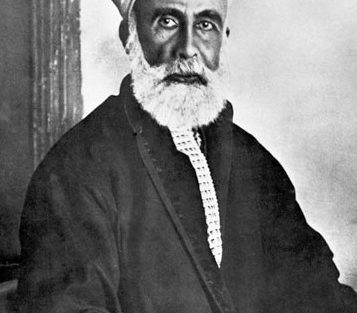
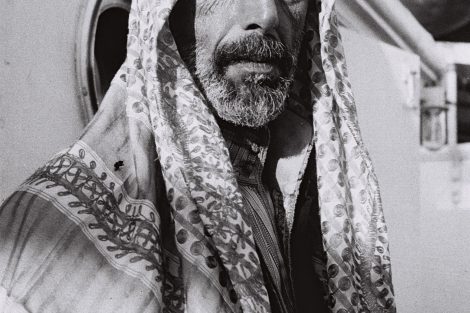
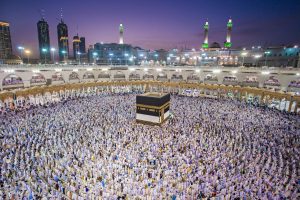
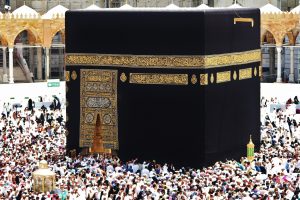
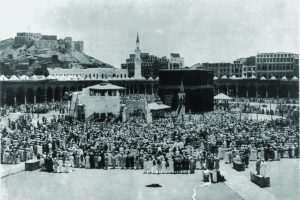
Add Comment